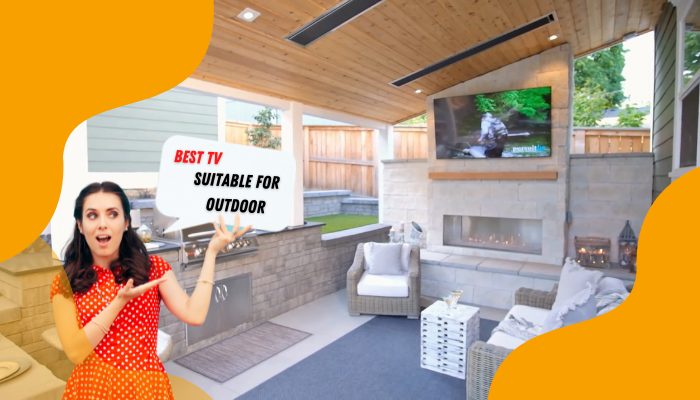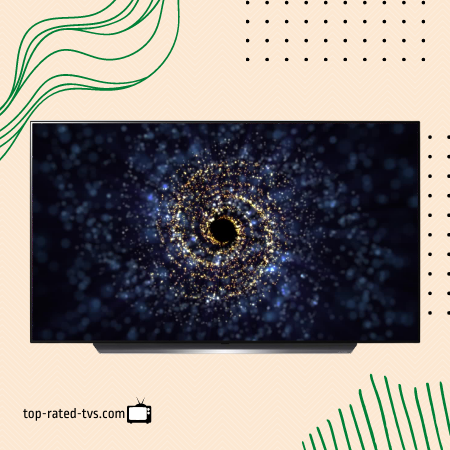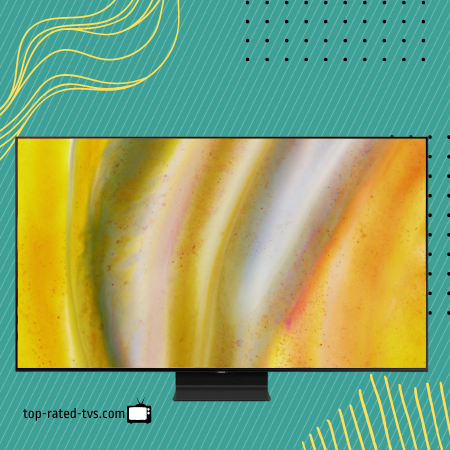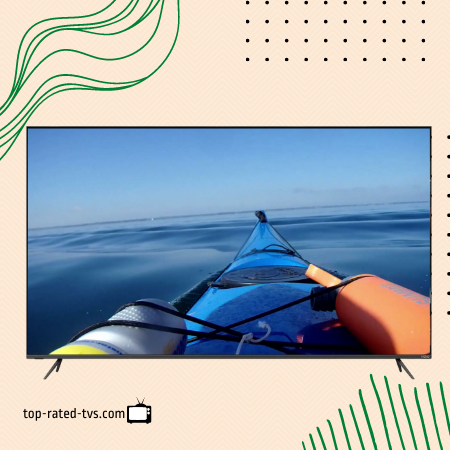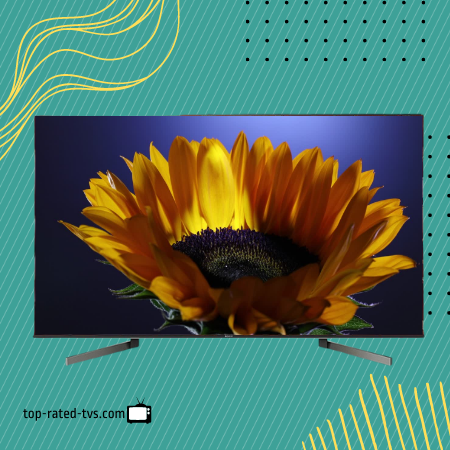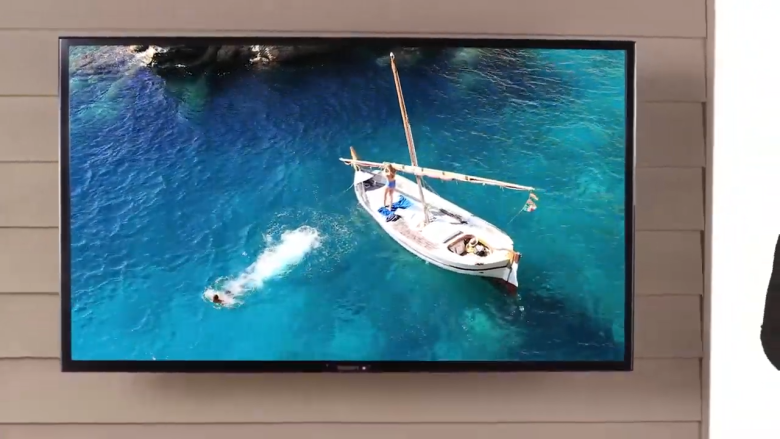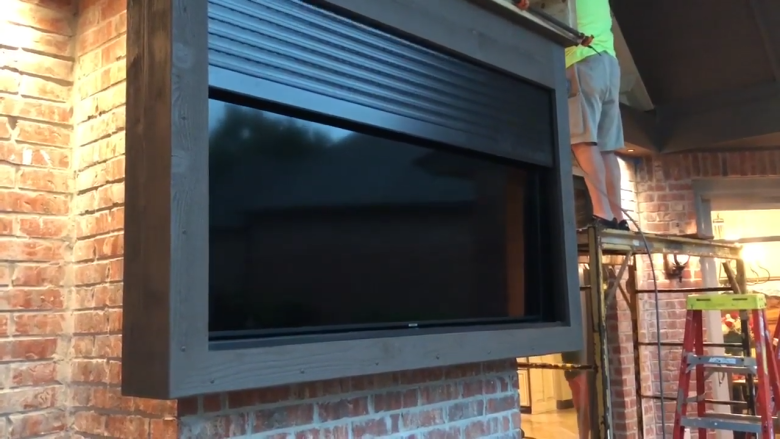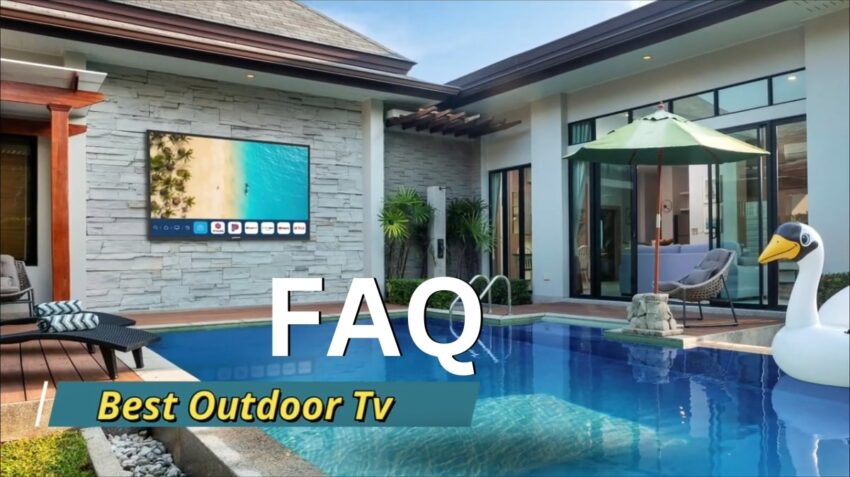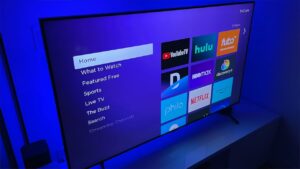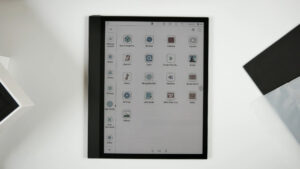I vividly remember the time when my friends and I planned a cozy outdoor movie night under the starry sky. We wanted to enjoy a film together, surrounded by nature, and escape the confines of our living rooms.
However, the thought of hauling our indoor TV outside seemed like a hassle, and we didn’t want to compromise on the viewing experience either. That’s when we discovered the world of outdoor TVs.
Outdoor TVs have become a popular solution for those who want to entertain guests or simply relax outdoors. Gone are the days of sitting inside, bored, while relatives and friends visit. Now, we can bring the excitement and joy of watching movies, sports, and playing games to our outdoor spaces.
Finding the perfect outdoor TV can be a challenge, however, as not many televisions are specifically designed for outdoor use. We had to consider factors like reflection quality, picture clarity, and brightness to ensure optimal viewing, especially in the face of abundant daylight.
If you’re in search of an outdoor TV that can meet your needs, check out our recommendations for the best outdoor televisions available. I have scoured the selections both online and in store to bring you the most comprehensive list out there.
1. Best overall: Samsung The Terrace
I recently had an opportunity to try out the SAMSUNG 55-inch Class QLED 4K Terrace Outdoor TV, and it is a game-changer for alfresco viewing. Tailored for outdoor environments, it showcases a brilliantly vivid 4K QLED picture fine-tuned for daylight clarity. With its robust weather-resistant features, it effortlessly stands up to the elements, backed by an IP55 rating for dust and water defense.
The Tizen-powered smart TV streamlines your access to coveted apps, streaming platforms, and integrated home systems. Its anti-reflective screen provides an impeccable view regardless of your vantage point.
Enhanced with Wi-Fi and Bluetooth, it synchronizes effortlessly with networks and devices. When you get a chance to check out its diverse contrast, powered by Direct Full Array 16X, you will know the convenience of voice commands with Alexa on board. It is a fantastic unit, well worth checking out.
| Key Features/Specifications | Details |
|---|---|
| Screen Size | 55 Inches |
| Display Technology | QLED |
| Resolution | 4K |
| Refresh Rate | 120 Hz |
| Special Features | 100% Color Volume with Quantum Dot; Water and Dust Resistant; Smart TV Powered by Tizen™, Wide Viewing Angle with Anti-Glare; Direct Full Array 16X; Quantum Processor 4K |
- High contrast ratio.
- Exceptional build quality.
- Can get extremely bright.
- Outstanding reflection handling.
- Sub-par viewing angles.
2. Best OLED Outdoor TV For Night Use: LG CX OLED
Within the TV realm, the LG OLED65CXPUA has earned its reputation under my scrutiny. This 65-inch 4K Smart OLED showcases not just a display but an artistic canvas. The OLED prowess means every pixel illuminates autonomously, capturing the essence of true blacks and vivid hues.
Immersing in films, series, or gaming ventures reveals layers of mesmerizing details. Plus, with Alexa at the helm, everything from content search to smart home orchestration becomes a voice command away. Be it the passion of a film enthusiast, the thrill of a gamer, or the zest of a tech lover, this LG OLED serves as an unmatched spectacle.
| Feature/Specification | Description |
|---|---|
| Display Technology | OLED |
| Resolution | 4K (3840 x 2160) |
| Refresh Rate | 120 Hz |
| Special Features | Α9 Gen 3 AI Processor 4K with AI Picture Pro/Sound Pro; Dolby Vision IQ and Dolby Atmos; webOS and ThinQ AI with Magic Remote. |
| Supported Internet Services | Netflix, Prime Video, Hulu, Vudu, Google TV. |
- Infinite contrast ratio.
- Wide viewing angles.
- VRR support.
- Displays wide color gamut.
- Risk of permanent burn-in.
- Only decent HDR peak brightness.
3. Best Outdoor TV For Sports: Samsung Q90/Q90T QLED
The SAMSUNG 65-inch Class QLED Q90T Series is a marvel in the world of TVs and during my testing, it really performed at a high level. Its Direct Full Array 16X demonstrates precision at its finest, bringing forth blacks and whites in their truest forms.
Sit anywhere, and thanks to the Ultra Viewing Angle, the clarity and vibrancy remain uncompromised. Witnessing the Quantum HDR 16X in action is like stepping into a new cinematic dimension, where brightness and color redefine realism.
Sound-wise, the Object Tracking captivates, making the action audibly dimensional. Lastly, the magic touch: the Quantum Processor 4K. Leveraging deep learning AI, it transforms everything to unparalleled 4K clarity.
| Feature/Specification | Description |
|---|---|
| Display Technology | QLED |
| Resolution | 4K UHD |
| Refresh Rate | 120 Hz |
| Special Features | Direct Full Array 16X; Ultra Viewing Angle with Anti-Glare; Quantum HDR 16X; Quantum Processor 4K |
| Supported Internet Services | Netflix, Hulu, Amazon Instant Video, YouTube, Browser |
- Gets very bright in SDR and HDR.
- Decent viewing angles.
- Exceptional reflection handling.
- Vignetting and dirty screen effect.
4. Best Large Outdoor TV: Sony XBR85X950H
Next up, we have the Sony X950H 85-inch TV, which is truly a masterpiece in the realm of visual entertainment. The 4K Ultra HD display is enlivened by the robust Picture Processor X1 Ultimate, fine-tuning each pixel for optimum color, contrast, and clarity.
The TV’s TRILUMINOS Display stands out, rendering every shade and tone as the creator envisioned. Dive deeper into scenes with the luminous FULL ARRAY LED technology and precise local dimming, accentuated further by the X-tended Dynamic Range PRO 6x’s immense contrast.
Gaming sessions are elevated to new heights with its swift and responsive Game Mode. Navigating its features is a breeze with the voice-enabled Smart Android TV and Google Assistant integration. Plus, with Alexa compatibility, it seamlessly melds into any contemporary smart home ecosystem.
| Feature/Specification | Description |
|---|---|
| Screen Size | 84.6 Inches |
| Brand | Sony |
| Resolution | 4K |
| Refresh Rate | 120 Hz |
| Special Feature | FULL ARRAY LED |
- Excellent SDR and HDR peak brightness.
- Outstanding reflection handling.
- Mediocre viewing angles.
5. Best TV For Bright Settings: Vizio P Series Quantum
After testing the P-Series, I was genuinely impressed with this unit and by its Dolby Vision Bright Mode. The color accuracy and saturation are incredibly lifelike, and the blacks are impeccable. I appreciated that it handles multiple HDR formats, making it versatile for all sorts of content.
The Quantum Color technology truly stood out, offering a cinematic palette with over a billion vibrant hues. Moreover, the Active Full Array, boasting up to 144 local dimming zones, delivers colors that are intensely vibrant alongside deep blacks and striking contrast that truly brings every scene to life.
If you’re into action films or high-octane video games like I am, the UltraBright 1200 won’t disappoint, specialy beacause of its low input lag. It amplifies the imagery to reach up to 1200 nits of peak brightness. But this TV’s intelligence goes beyond visuals. Its Alexa compatibility streamlined my voice commands, and the expansive list of supported internet services means there’s always something new to watch.
| Feature/Specification | Description |
|---|---|
| Screen Size | 65 Inches |
| Brand | VIZIO |
| Display Technology | QLED |
| Resolution | 4K UHD |
| Refresh Rate | 120 Hz |
| Special Features | Hundreds of Free Channels with WatchFree+, IQ Ultra Display Processor, Active Pixel Tuning, Active Full Array with 144 Local Dimming Zones, DTS TruVolume |
- Produces extremely bright HDR highlights
- Low input lag for gamers
- Excellent motion handling
- The image loses accuracy when viewed at an angle
6. Best Large TV: Sony XBR85X90L
I’ve recently had a chance to test the BRAVIA XR X90L, and its Full Array LED display, driven by the sophisticated Cognitive Processor XR, consistently delivers some of the most striking contrasts and authentic visuals I’ve encountered.
From blockbusters to gaming sessions, the X90L’s dynamic contrast ratio, diverse color spectrum, and luminance truly stand out. Google TV integration not only streamlines access to countless streaming platforms but also categorizes them efficiently.
But it’s not just a visual marvel; its Acoustic Multi-Audio system, combined with Dolby Atmos compatibility, offers a refined auditory experience. If you’re into movies, gaming, or marathoning series, the X90L stands as a testament to Sony’s commitment to immersive entertainment.
| Feature/Specification | Description |
|---|---|
| Screen Size | 85 inches |
| Brand | Sony |
| Internet Services | Netflix, Disney Plus, Prime Video, Hulu, HBO Max, Airplay 2, Peacock, Apple TV |
| Display Technology | LED |
| Resolution | 4K |
| Refresh Rate | 120 Hz |
| Special Features | NEW Eco Dashboard, Movies with BRAVIA CORE (5 credits/12 months), NEW Game Menu, Exclusive features for PlayStation® 5, Billions of colors with XR Triluminos Pro |
| Model Name | SNXR85X90L |
| Included Components | Power cable, remote control, AAA batteries, stand |
- Deep and uniform blacks
- Excellent motion handling
- Bright HDR highlights
- Picture quality degrades at an angle
What to Look for in an Outdoor Television
Outdoor TVs are great for having fun and watching the game on your patio. Like standard indoor televisions, they can handle high humidity, intense temperatures, and salt air without breaking. Many of them can also handle full exposure to the weather.
With that being said, there are other items to bear in mind when buying an outdoor TV, such as TV location, screen size, and brand, if you choose a smart TV, and if there is a chance of physical damage (i.e. do you have children playing where the TV is going to be?. There are also two separate types of weatherproofing to be considered: enclosures and nano-coating materials.
The enclosure is a weatherproof external cover where the television is, which defends it from all elements and physical damage. For nano-coating, the internal elements of the TV are equipped with a proprietary conformal procedure that prevents the TV from dust, salt air, and high temperatures.
Silicone and 3 M covers are used on certain nano-coated televisions to make them fully weatherproof against all conditions, including rain and snow, although these TVs are not as resistant to physical harm as those in the enclosures.
How to Choose the Best Outdoor TV
Keep in mind that outdoor TVs are distinct from indoor TVs because they have unique features that render them usable and durable in outdoor living spaces.
Before you buy, these are the things you‘re going to be looking for on the outdoor Screen.
Water Resistant Vs. Waterproof
Most people believe these two words are the same, but they are somewhat different. Waterproof TVs will be functional, even though they are fully immersed in water.
Water-resistant TVs can withstand being wet, so are likely to be safe from any heavy rain, but submerging them can result in long-term damage.
Just use the option you think is ideally adapted to your outdoor patio. If your TV is protected by a roof or a wall, water resistance can be perfect. If it’s going to be open, we highly suggest waterproof.
Environment
Okay, consider the environment. Many TVs, while considered to be outdoor-specific, do not perform well in such weather or environmental conditions. Some may prescribe specific connectors to reduce corrosion or build-up deposits in high humidity or salty environments.
Many TVs can only work well within a specific temperature range. If you stay in a colder climate, look for a TV with an internal heater that holds the interior of the Screen nice and dry when it’s cold and snowy.
Full Sunlight vs. Shaded vs. Partial-Shaded
Lighting can be rough on screens, so intense lighting will render it difficult to see a picture. Outdoor TVs come with various lighting requirements to render watching them easier under a range of light levels.
Full-day, full-shade, and partial-shade TVs are supposed to be installed at the required level of light. Hanging a shadow TV in the sun can make it difficult to see the picture.
Size
Outdoor TVs, like indoor TVs, come in a range of sizes. Remember the room you‘re going to have to put the Television, the size of your entertainment area, and how many people are going to watch. If your room is small, there could be a 75 “TV for your space.
Picture Quality
Look for panels that are made of anti-reflective, high-temperature glass. This mix would result in higher image quality than other options. This form of the screen would also be more robust and have a better picture quality in the sun.
To further improve the picture quality, make sure that the TV you pick has options for adjusting the display attributes such as light, color, and width.
FAQ
Do you need a special TV for the outdoor patio?
Yes, as outdoor TVs are designed to withstand the elements and provide a clear picture in bright sunlight. They are designed to be weather-resistant and can typically operate in a wide range of temperatures. They also have brighter displays that can be viewed in direct sunlight, making them a better fit for outdoor use.
When choosing an outdoor TV, it’s important to consider factors like screen size, resolution, and features like built-in speakers and smart TV capabilities. You should also make sure the TV is properly installed and protected from the elements to ensure its longevity and performance.
Conclusion
Outdoor TVs have truly revolutionized the way we entertain and relax in our outdoor spaces. Whether it’s for a family movie night, a sports game day, or just a quiet evening with your favorite show, these TVs bring a whole new level of enjoyment.
However, remember that not all outdoor TVs are created equal. From water resistance to brightness, there are several factors to consider when choosing the right one for your needs. But once you find the perfect fit, I guarantee it will transform your outdoor living space into an entertainment paradise.
So, whether you’re planning a summer party or just want to upgrade your patio, consider investing in an outdoor TV. It’s an investment that will pay off in countless hours of outdoor fun and entertainment. Happy watching!
Related Posts:
- Samsung MU6290 Smart TV 2024 Review - Upgrade Your…
- The Element Amazon Fire TV 2024 - The Ultimate…
- The Role of Public Proxies in Streaming…
- 7 Best Outdoor TV Covers for Weatherproof Protection…
- Best 4K TV For Christmas 2024 - Best Deals On Top Rated TVs
- 13 Best LG TVs for an Excellent Picture Quality 2024…


